2021 ISNR Conference Poster Presentation
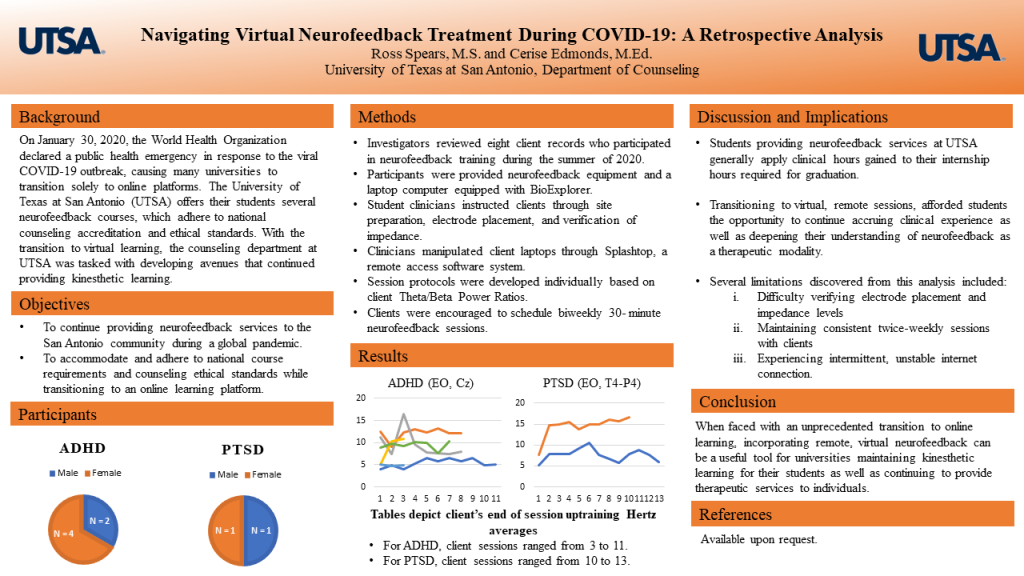
Ross Spears and Cerise Edmonds examined the effects of the COVID-19 pandemic on the neurofeedback training program at UTSA, for which they received the 2021 ISNR Student Poster Award.
2020 Using Neurofeedback to Lower PTSD Symptoms
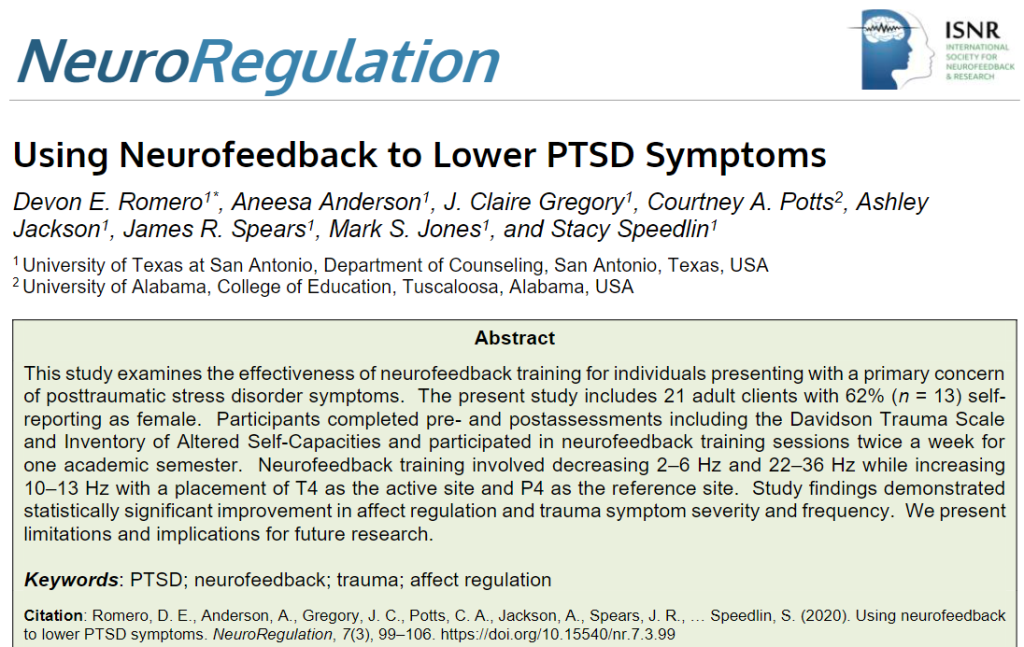
2020 Predictors of Neurofeedback Outcomes
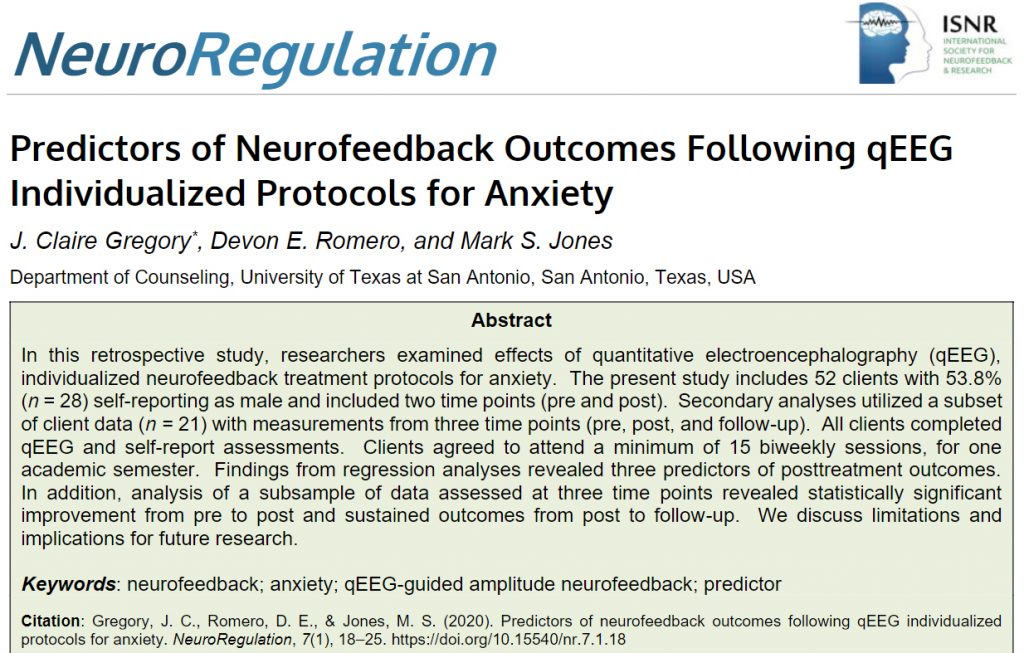
2019 ISNR Poster Presentation
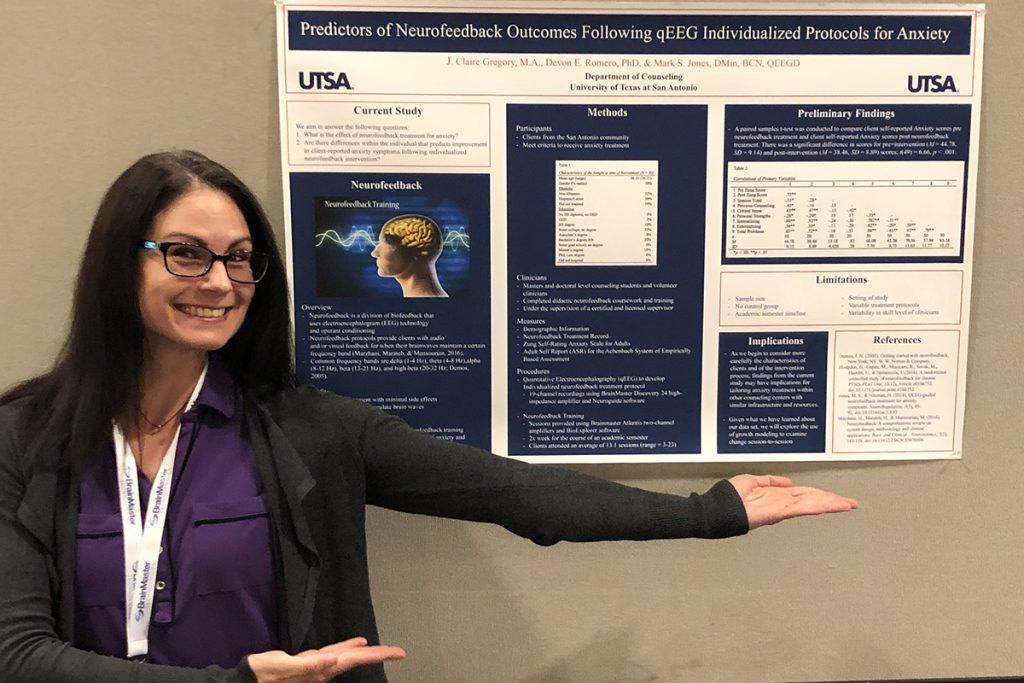
2018 QEEG-Guided Neurofeedback Treatment for Anxiety Symptoms
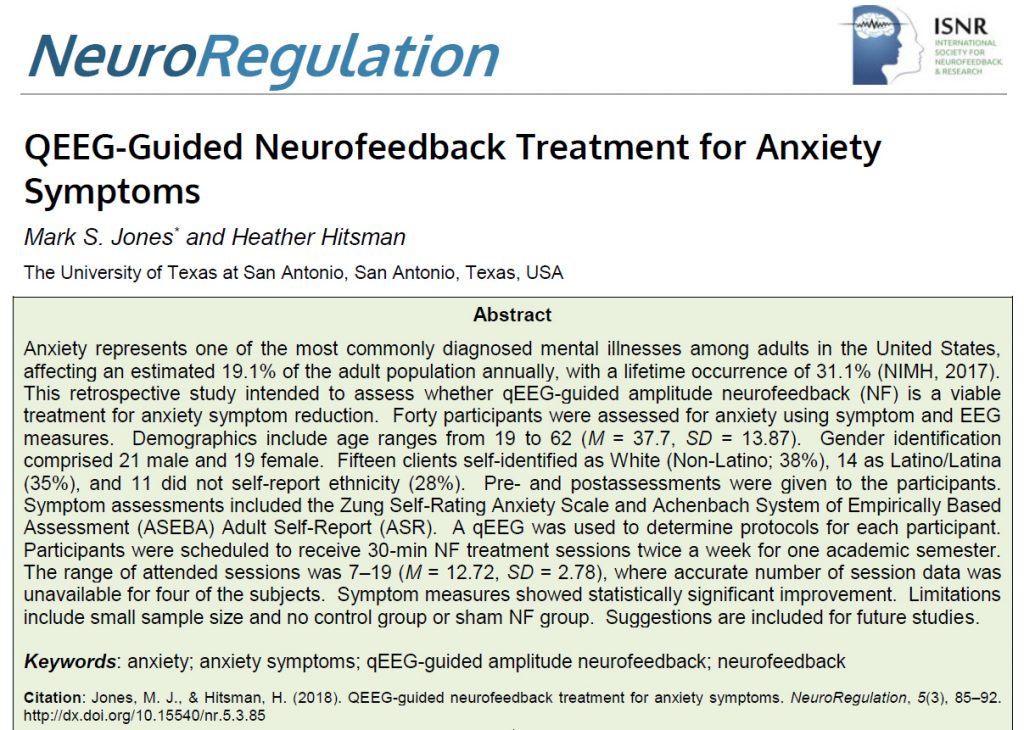
2018 ISNR Poster Presentation
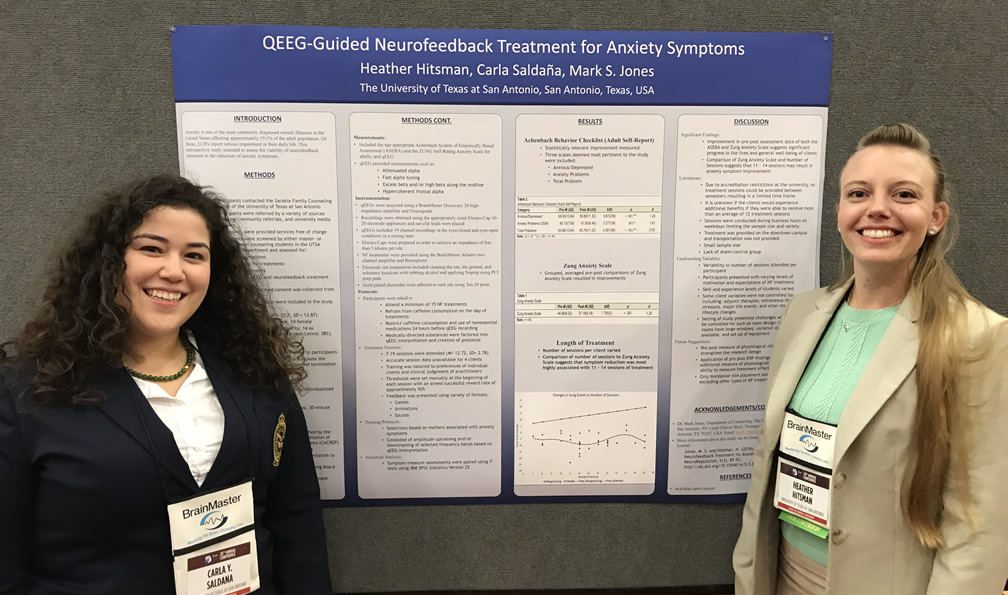
Carla Saldana and Heather Hitsman presenting their poster on treating anxiety with neurofeedback.
Dr. Dennis Romig presents Quadrant Brain Theory
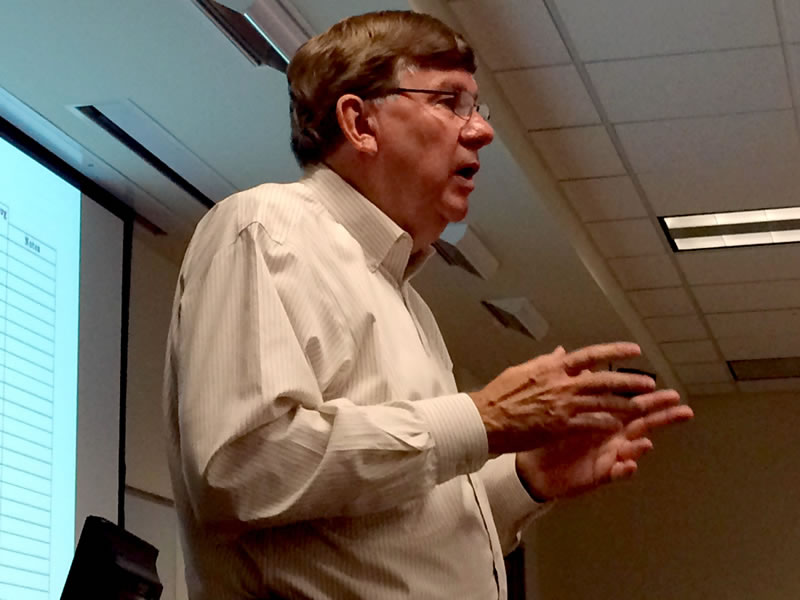
Dennis Romig, PhD, clinical psychologist and past president of the Biofeedback Society of Texas, presented the Quadrant Brain Theory utilized in his Austin-based neurofeedback practice. Dr. Romig is pictured here lecturing in the introductory neurofeedback course at UTSA. He discussed his research on treating depression.
Anxiety
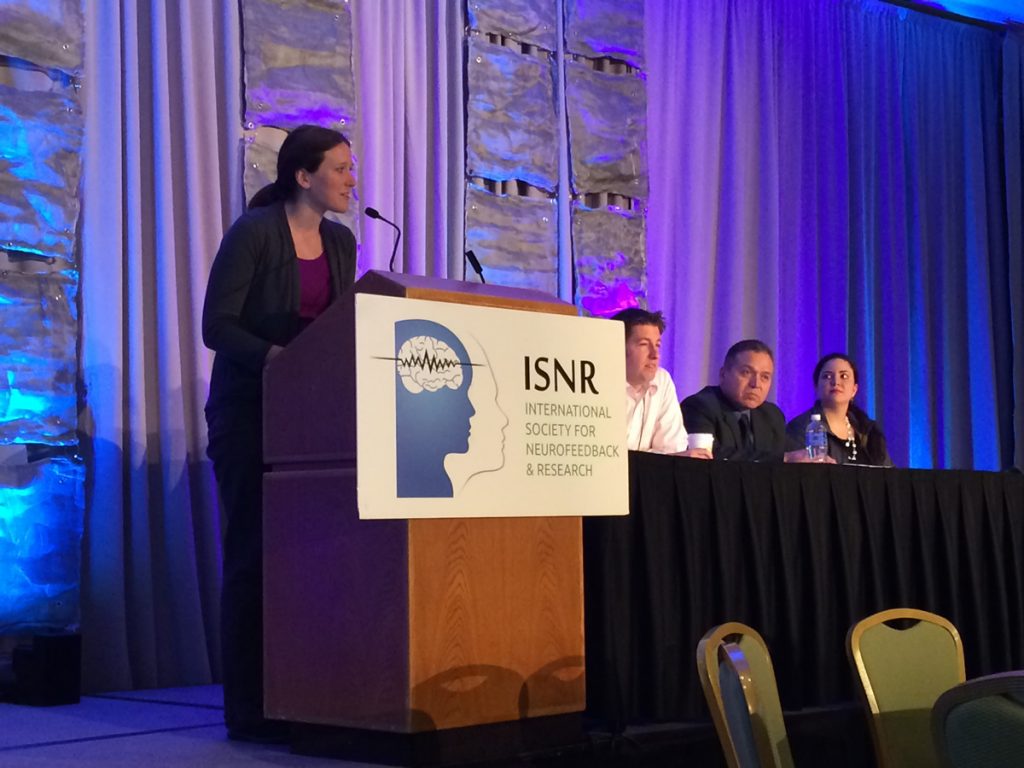
An ongoing retrospective study began in 2014, with the pilot study published in Neuroregulation journal in 2015 (click here for article) and presented at the 2015 International Society for Neurofeedback and Research (ISNR). Lead author Stephanie Dreis, and fellow authors Michael Fitzsimmons, Greg Perez, and Angela Gouger presented the findings in the joint plenary session.
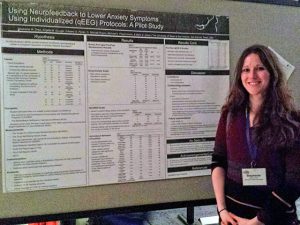
In addition, Stephanie Dreis presented the pilot as a poster presentation at the 2016 Association for Applied Psychophysiology and Biofeedback (AAPB).
Technical Aspects of Neurofeedback

While the focus of the neurofeedback program is on applied (clinical) aspects of treatment, there is a role in addressing technical issues, as well. As the field advances, so does the technology. Dr. Mark S. Jones, Society Faculty Adviser and Director of the program, published a research project in 2015 in which several students across various semesters assisted in gathering data for an experiment in testing the validity of two means of assessing the quality of electrode connection.